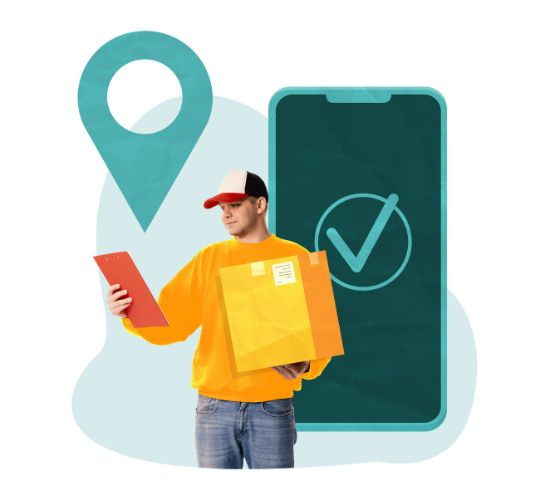DISCOVER THE IMPORTANCE OF LAST MILE TRANSPORTATION
What is Last Mile Transportation?
Challenges Faced by Last Mile Transportation
Adapting to an ever-expanding online trade
Most of the challenges that last-mile businesses must overcome stem from the relentless boom e-commerce is undergoing. The volume of orders to be dealt with and the impatience of end recipients have skyrocketed in recent times. These changes, far from being temporary, have made it clear they are here to stay.
Meeting the consumer has become essential to survive in the cut and thrust world of e-Commerce. Last mile distribution is at the fulcrum of the customer experience, as any issue can directly have a knock-on effect on customer loyalty.

Meeting an upward demand level
Online commerce, with its customer-based outlook, has set delivery conditions through the roof. As a result, shoppers want free, breakneck speed shipping to be fully satisfied.
The situation becomes even more complicated when seasonal demand peaks (Black Friday, sales, etc) are added to the mix.
Not all last-mile companies boast the expertise and resources to meet today’s lofty consumer expectations. Thus, only those with standout infrastructures and technology will put us on the path to forging our buyers’ loyalty.
Towards a more transparent last mile service
Intricately linked to the previous point, both the sender and the recipient want to know at all times where their order is. This is where real-time tracking technologies make a difference.
That empowering effect is precisely has been accomplished at Logisfashion through our Last Mile Control Tower tool.
Overcoming external and unforeseen factors
One of the major risks posed by last-mile transportation derives from the influence exerted on it by several events beyond our control. Let us bear in mind, for example, mechanical breakdowns, traffic jams or inclement weather.
Of course, even the most meticulous planning cannot foresee future events. The solution to always be one step ahead is to partner with a dedicated transport manager who can overcome incidents in real time.
Dealing with thwarted deliveries
Most customers want their order delivered to their doorstep, but many times, no one is at home to pick it up. This frequent issue multiplies the expenses generated by last mile transportation. It is therefore necessary to improve communications plus real time monitoring between the carrier and the recipient.
The issue of costs involved in last mile transport
Globalisation, thwarted deliveries, sustainability… all the challenges of hair distribution boil down to an increase in costs. However, it is essential to balance these expenses with consumers who demand shipments at zero cost. Achieving this delicate balance is, undoubtedly, the single greatest challenge facing last-mile transportation.
How can last mile logistics costs be regulated?
Did you know that the costs of the last mile can be almost half of what the entire logistics process costs?
Saving on such expenses is one of the top priorities of any logistics operator.
A selection of standout strategies to lower costs in last mile service without sacrificing quality include:
- More competitive rates thanks to economies of scale.
- Streamlining routes: Alongside savings on fuel, this practice makes delivery swifter and more sustainable.
- Real-time tracking: streamlines decision making to avoid thwarted deliveries and also allows unforeseen incidents to be resolved.
- Specialist customs advice: avoids incurring fines derived from non-compliance with customs procedures.
In short, technological advances and management by a specialized logistics partner condense the main ways to cut down on last-mile costs. This saving has a significant impact on total logistics investment, which will allow us to compete under more favourable conditions.
Save logistical costs on your last mile transportation
Efficiency and sustainability, agility and savings… truly, the future of last-mile transportation is marked by the need to ponder competing demands.
That is why at Logisfashion all of our experience and means are deployed to adapt to consumers’ changing demands.

